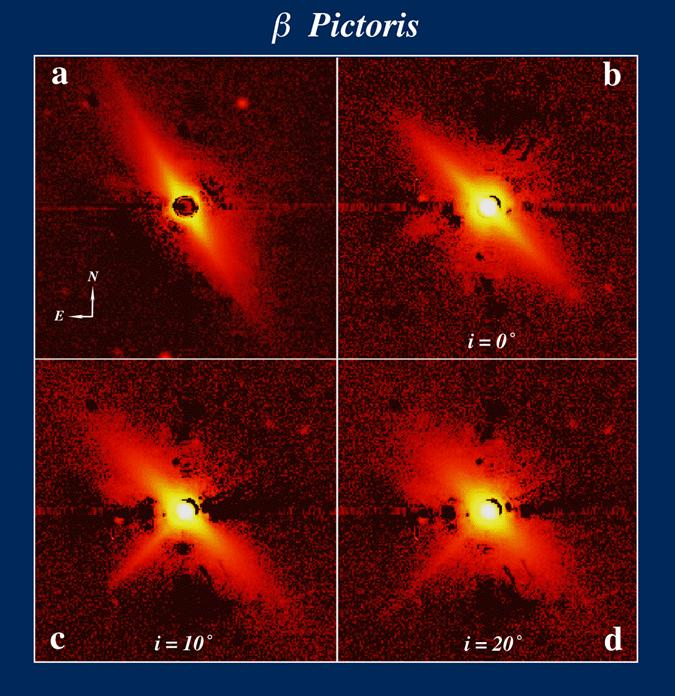 click here for a larger view
click here for a larger view
Is it real or is it Memorex?
Panel (a) shows a coronagraphic observation of the Beta Pictoris circumstellar disk, observed at the University of Hawaii 2.2 meter telescope on Mauna Kea. The image has been processed to remove scattered light by subtracting the image of a nearby, dust-free star (suitably scaled and registered). Panels (b) - (d) show model disks that have been added to data in such a way as to incorporate all the errors and nuances of real coronagraphic data. The models are used to constrain the range of disk parameters (inclination, radial gradient, vertical scale height, flare factor, phase function) in Beta Pictoris. A full description may be found in
Kalas & Jewitt (1996) Astronomical Journal, 111, 1347
Updated 1997 Nov 17
How do the morphology and brightness of a circumstellar disk vary with the disk inclination and particle phase function? This question has bearing on our interpretation of the Beta Pictoris disk, and on the finding that Beta Pictoris-like disks are rare (in fact, Beta Pic is unique).
This Figure shows a model disk inclined to the line of sight at a range of angles, and composed of particles having three different phase functions (isotropic, a forward-scattering phase function based on observations of our own Zodiacal Cloud, and a backward-scattering Henyey-Greenstein model). The model is normalised to the Beta Pictoris disk. From the Figure, we conclude that highly inclined (face-on) disks are difficult to distinguish from the circular halo of light scattered from the central star. We also note that anisotropies in the phase function produce clear asymmetries in the disk morphology, especially at small inclinations. The perpendicular spike (due to forward scattering from the near-side of the disk) seen in the middle column could easily be confused with a stellar jet.
Figure from Kalas & Jewitt (1996), Astronomical Journal, 111, 1347.
Updated 1997 Nov 17